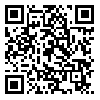Volume 20, Issue 76 (4-2020)
refahj 2020, 20(76): 271-312 |
Back to browse issues page
Download citation:
BibTeX | RIS | EndNote | Medlars | ProCite | Reference Manager | RefWorks
Send citation to:



BibTeX | RIS | EndNote | Medlars | ProCite | Reference Manager | RefWorks
Send citation to:
Khezri F, Ejtehadi M, Qaderi S. (2020). A Case Study of the Crime-ridden Neighborhood: Structures, Processes, and Mechanisms of Crime Occurrence in the Harandi Neighborhood of Tehran. refahj. 20(76), 271-312.
URL: http://refahj.uswr.ac.ir/article-1-3492-en.html
URL: http://refahj.uswr.ac.ir/article-1-3492-en.html
Abstract: (4036 Views)
Abstract
Introduction: This study investigates the factors affecting crime in the Harandi neighborhood of Tehran.
Method: The present study was conducted using case study method. Research data was collected through various data gathering methods, such as surveys, secondary data, previous studies, and observations. In order to investigate some causal factors and mechanisms of the theoretical model, 370 residents were selected using random sampling method, and survey questionnaires were distributed among them.
Findings: The results show that the structural characteristics of the neighborhood such as poverty, residential instability, ethnic heterogeneity, mixed land use patterns, disrupted structures caused by weakening social relations, the power of the dominant culture and increasing number of disorders, shaping the cultural framework of legal cynicism, and undermining collective efficacy led to crime-ridden neighborhood. In other words, the Harandi neighborhood has become crime-ridden because the neighborhood’s collective efficacy or self-regulation capacity has been disrupted. Under these circumstances, residents would not be able to to mobilize their resources to fight against crime through informal and formal processes.
Discussion: The findings imply a set of factors that weakened collective efficacy and self-regulatory capacity has made Harandi neighborhood become crime-ridden. Crime has also, under some circumstances, enhanced collective efficiency and in some sections of the neighborhood has weakened community life and collective efficiency
Introduction: This study investigates the factors affecting crime in the Harandi neighborhood of Tehran.
Method: The present study was conducted using case study method. Research data was collected through various data gathering methods, such as surveys, secondary data, previous studies, and observations. In order to investigate some causal factors and mechanisms of the theoretical model, 370 residents were selected using random sampling method, and survey questionnaires were distributed among them.
Findings: The results show that the structural characteristics of the neighborhood such as poverty, residential instability, ethnic heterogeneity, mixed land use patterns, disrupted structures caused by weakening social relations, the power of the dominant culture and increasing number of disorders, shaping the cultural framework of legal cynicism, and undermining collective efficacy led to crime-ridden neighborhood. In other words, the Harandi neighborhood has become crime-ridden because the neighborhood’s collective efficacy or self-regulation capacity has been disrupted. Under these circumstances, residents would not be able to to mobilize their resources to fight against crime through informal and formal processes.
Discussion: The findings imply a set of factors that weakened collective efficacy and self-regulatory capacity has made Harandi neighborhood become crime-ridden. Crime has also, under some circumstances, enhanced collective efficiency and in some sections of the neighborhood has weakened community life and collective efficiency
Keywords: Crime-ridden neighborhood, Causal processes and mechanisms, Structural characteristics of neighborhood.
Type of Study: orginal |
Received: 2019/09/22 | Accepted: 2020/06/23 | Published: 2020/10/6
Received: 2019/09/22 | Accepted: 2020/06/23 | Published: 2020/10/6
Send email to the article author
| Rights and permissions | |
 |
This work is licensed under a Creative Commons Attribution-NonCommercial 4.0 International License. |






